What’s Up?
Tuesday morning was good, but nowhere as good as Monday morning on the second DeSoto IPT had been. With our best pair of copulating Royal Terns — in the very shallow water on the edge fo the Gulf in sweet early light, we got photo bombed as a tern with a dirty breast landed in front and just to the right of the copulating pair. The two gorgeous birds went at it enthusiastically for about 8 minutes! We had several pairs of copulating Sandwich Terns as well, but none ever offered a clean chance. The morning back-up location paid off nicely with lots of flying Brown Pelicans. Jake Levin concentrated on the Ruddy Turnstones catching clam spat.
We enjoyed a great brunch of fresh grilled tuna and a big salad. That was followed by a photoshop session where we discussed creating and using Regular and Inverse Layer Masks, Expanding canvas with the Content-Aware Fill Crop Tool method, and bringing up detail in properly exposed, sunlit WHITEs. For the latter we used both Linear Burn and Color EFEX Pro and compared results by turning the layers on and off with an eyeball click. That after teaching the group to make Color Range selections.
Despite the east wind, Tuesday afternoon was fantastic, much better than Monday afternoon had been. We began and ended at my favorite afternoon location with a gorgeous, breeding plumage, dark morph Reddish Egret. After that bird departed, we worked several Great Blue Herons and Great Egrets and fewer shorebirds than had been present the previous day. Jake noted that a large flock of shorebirds had landed several hundred yards to our right; the star of that show was a bathing Wilson’s Plover. Then Jim Miller spotted a lovely and cooperative immature Little Blue Heron fishing in still blue water and that is how we ended our day.
Ah, I almost forgot, I came up with an astoundingly easy and effective way to shoot using the tilted rear screen of the monitor. I will be sharing that with your hear soon.
Today is Wednesday 28 April. The forecast for this morning is perfect: sunny with a southeast breeze. Wherever you are, and whatever you are doing, I hope that you have a great day.
This blog post took about two hours to prepare and makes 126 consecutive days with a new one. Please remember that if an item — a Delkin flash card, or a tripod head, for example, is available from B&H and/or Bedfords and is also available in the BAA Online Store, it would be great if you opt to purchase from us. We will match any price. Please remember also to use my B&H affiliate links or to save money at Bedfords by using the BIRDSASART discount code at checkout. Doing either often earns you free guides and/or discounts. And doing so always earns my great appreciation.
|
|
The BIRDS AS ART Current Workflow e-Guide (Digital Basics II).You can order your copy from the BAA Online Store here, by sending a PayPal for $40 here, or by calling Jim or Jennifer weekdays at 863-692-0906 with your credit card in hand. Be sure to specify Digital Basics II. |
The BIRDS AS ART Current Workflow e-Guide (Digital Basics II)
All of the techniques mentioned above, and tons more great Photoshop tips and techniques (with the exception of Capture One RAW Conversions) — along with all of my personalized Keyboard Shortcuts — are covered in detail in the BIRDS AS ART Current Workflow e-Guide (Digital Basics II), an instructional PDF that is sent via e-mail. Learn more and check out the free excerpt in the blog post here. While the new e-Guide reflects my MacBook Pro/Photo Mechanic/DPP 4/Photoshop workflow, folks using a PC and/or BreezeBrowser will also benefit greatly by studying the material on DB II. Note: folks working on a PC and/or those who do not want to miss anything Photoshop may wish to purchase the original Digital Basics along with DB II while saving $15 by clicking here to buy the DB Bundle.
Folks who learn well by following along rather than by reading can check out the complete collection of MP 4 Photoshop Tutorial Videos by clicking here. Note: all of the videos are now priced at an amazingly low $5.00 each.
You can learn how and why I converted all of my Canon digital RAW files in DPP 4 in the DPP 4 RAW Conversion Guide here. More recently, I became proficient at converting my Nikon RAW (NEF) files in Adobe Camera Raw. About two years ago I began converting my Nikon and Sony RAW files in Capture One Pro 12 and continue to do so today.
To purchase Capture One, please use this link. Then you can learn more about Capture One in the Capture One Pro 12 Simplified MP4 Video here. The next step would be to get a copy of Arash Hazeghi’s “The Nikon Photographers’ Guide to Phase One Capture One Pro e-Guide” in the blog post here.
You can learn advanced Quick Masking and advanced Layer Masking techniques in APTATS I & II. You can save $15 by purchasing the pair. Folks can learn sophisticated sharpening and (NeatImage) Noise Reduction techniques in The Professional Post Processing Guide by Arash Hazeghi and edited by yours truly. Please use this link to purchase NeatImage.
|
|
|
This image was created on 24 April 2021 on Lake Blue Cypress working from Clemens Van der Werf’s flats boat. I used the hand held Sony FE 600mm f/4 GM OSS lens and The One, the Sony Alpha 1 Mirrorless digital camera. ISO 3200. Exposure determined via Zebras with ISO on the rear dial: 1/6000 sec. at f/4 (wide open) in Manual mode. AWB at 7:23:25am on an overcast morning. Wide/AF-C was active at the moment of exposure and performed perfectly. Click on the image to see a larger version. Image #3: Osprey with whole catfish |
#3 For Me
In the Whole Catfish! blog post here, I asked which of the four images was best. The responses — as expected — were all over the place with no clear favorite. Everyone who commented did a great job and explained why they made their picks. In such an exercise, there is no right or wrong. The idea as always is to get folks thinking and analyzing.
Honestly, I like all four of them. If I had to choose a favorite, it would be #3, the image without a trace of the nest tree in the frame. Why? I love the direct stare and the fully flared wings. #4 would be a close second. Thanks again to the many who left thoughtful comments.
|
|
|
This image was created along a canal at Lake Blue Cypress on 23 April 2021. I used the hand held Sony FE 200-600mm f/5.6-6.3 G OSS lens, the Sony FE 2.0x Teleconverter, and The One, the Sony Alpha 1 Mirrorless digital camera. ISO 1000. Exposure determined via Zebras with ISO on the rear dial: 1/500 sec. at f/13 in Manual mode. AWB at 6:18pm on a sunny afternoon. Wide/AF-C was active at the moment of exposure and nailed the focus. Click on the image to see a larger version. Red-shouldered Hawk head portrait |
Silly-Tame Red-shouldered Hawk. And Focal Length Quiz
In the Silly-Tame Red-shouldered Hawk. And Focal Length Quiz blog post here, I wrote, After clicking on the image to see the larger version and checking out the 100% crop of the bird’s eyeball below, I’d love for you to guess (or figure out — there is a single clue …) the lens and TC that I used along with the focal length.
BPN-friend Joseph J. Przybyla played the role of spoiler by being the first to answer:
April 25, 2021 at 6:44am
Hey Artie, good morning… nice tight image of a Red-shouldered Hawk. I say you used your 200-600mm with the 2x Teleconverter. Have a wonderful day.
In an effort to throw folks off the right track, I replied as below
April 25, 2021 at 6:50am
Thanks, Joe. Good try! with love, a
Byron Prinzmetal left an insightful comment:
April 25, 2021 at 12:51 pm · Reply · Edit
F/13 should have more depth of field but some feathers on left side in the back are not sharp, but on right they are really sharp so I’m guessing the 200-600 with the 1.4 extender at 840mm, maybe even the 2x extender to explain the narrow depth of field. The f/13 should have more depth of field though so don’t understand the feathers on the back left side not looking real sharp, but the ones on the right sharper than the left. Suppose you used Topaz Sharpen AI and applied more on the right side? Topaz works wonders even on the best of best images in my opinion. Glad you put me onto the software and it get better with each update. Bp
The image above was created with the handheld 200-600, the 2X teleconverter, and the Alpha a1 at 1200mm. The clue was the f/13. I would rarely if ever stop down to f/13, but in this case, that was the wide open aperture. And the depth-of-field wide open at 1200mm at less than ten feet from the subject is razor thin. So with the birds head angled well toward us, the feathers on the back of the head are beyond the range of sharp focus. Thus, Byron’s analysis was pretty much spot-on. And so was Joe’s.
|
|
|
This image was created on 12 April 2021 on the Fort DeSoto IPT. I used the Induro GIT 304L/ Center Zone/AF-C was active at the moment of exposure and performed just about perfectly — see the screen capture below. Click on the image to see a larger version. Image #1: Western Sandpiper molting into breeding plumage |
Warning: Stay Away!
In the Shorebird Behavior Quiz. SONY Alpha a1 Crop-ability! blog post here, everyone including me loved the image, but nobody took a crack at identifying the head down/tail up behavior. The posture seen in the image above is an aggressive one that is often used by sandpipers and other shorebirds when defending a feeding territory. If the intruding bird does not move away, a tussle often ensues.
Shorebirds; Beautiful Beachcombers
My My Shorebirds: Beautiful Beachcombers, written for naturalists and birders, will teach you everything you’ve always wanted to know about the aging, identification, behavior, feeding habits and strategies, and the timing and routes of migration of North America’s sandpipers, godwits, yellowlegs, phalaropes, plovers, avocets, stilts, and oystercatchers. It was written especially for you.
|
|
|
This image was created on the evening of 14 April at Indian Lake Estates. I used the Induro GIT 304L/Levered-clamp FlexShooter Pro-mounted Sony FE 600mm f/4 GM OSS lens, the Sony FE 2.0x Teleconverter, and The One, the Sony Alpha 1 Mirrorless digital camera. AUOT ISO: 1600. The exposure was determined by Zebras with Exposure Compensation on the rear wheel: 1/1600 sec. at f/8 (wide open) in Manual mode. AWB at 7:45pm with a nicely muted sun. Wide/AF-C was active at the moment of exposure and performed to perfection. Image #1: Boat-tailed Grackle framed by the setting sun |
The image above was featured in the A Short But Great Move Pays Off! Can a Big Over-exposure Be Best? blog post here. There was not, as some folks assumed, anything distracting to the left of the sun. I placed the bird on the left side of the frame so as to include the vegetation that to balance the sun ball on the left side of the frame and because it added to the motif.
Ted Willcox hit the nail on the head on April 16, 2021 at 11:28am when he commented as below:
You placed the bird on the left side to show more of the vegetation on the right which I believe makes the image that much better!
Well said, Ted.
|
|
|
This image was created in Katchemak Bay, Homer, AK. I used the hand held Sony FE 70-200mm f/2.8 GM OSS lens (at 112mm!) and the AF King, the Sony Alpha a9 II Mirrorless Digital Camera body.. ISO 1000. Exposure determined via blinkies with ISO on the Thumb Dial: 1/2000 sec. at f/3.2 in Manual mode. Center Zone AF-C performed perfectly. Click on the image to view a larger version Sub-adult Bald Eagle in flight on snowy day |
In the 112 millimeters? Surely You Jest ! Depth-of-Field Question blog post here, I asked, Would stopping down one full stop here to f/4.5 have been a good idea? Why are why not?
The two Warrens commented most accurately:
Warren Hatch/April 7, 2021 at 7:55pm ·
If you went to f/4.5 (and kept the same ISO), your shutter speed would have been 1/1000 for the equivalent exposure. You had plenty of depth of field (so there was) no reason so sacrifice the extra sharpness you achieved at 1/2000.
Warren Howe/April 6, 2021 at 9:25am
No, I don’t think stopping down would have been a good idea. At that focal range, you already had plenty of depth of field. The entire eagle is sharp and even the tall grass behind the subject is fairly sharp. Even the distant trees are fairly sharp. Stopping down would have made them more in focus and therefore, more distracting. Also, and importantly, it would have increased the ISO or resulted in a slower shutter, (none of) which would have helped …
To my eye, the entire subject is more than sharp enough as it was pretty much covered by the depth-of-field at 112mm. FYI, the total depth of field at f/3.2 at approximately 30 feet is 2.82 feet, 1.34 feet in front of the point of focus.
Typos
With all blog posts, feel free to e-mail or to leave a comment regarding any typos or errors.


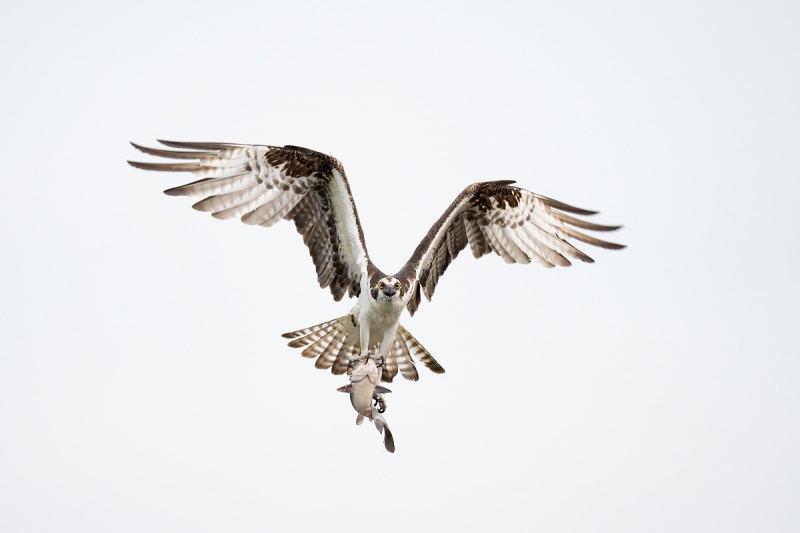
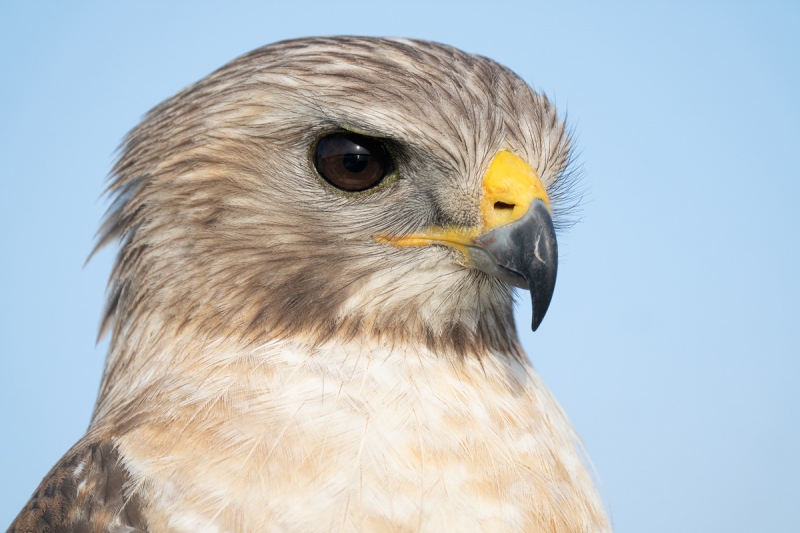
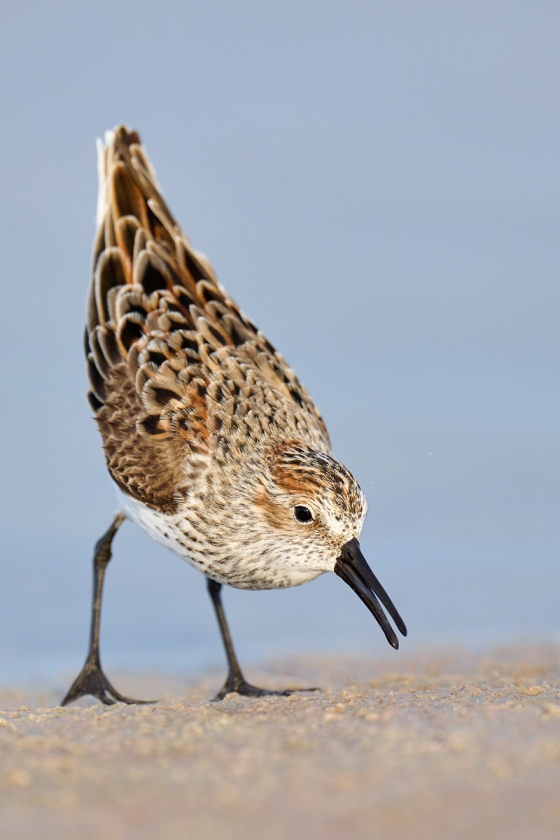
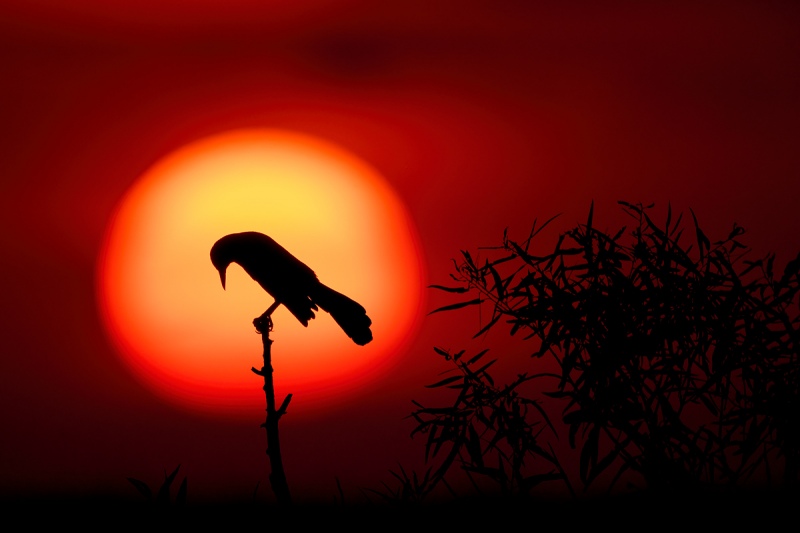
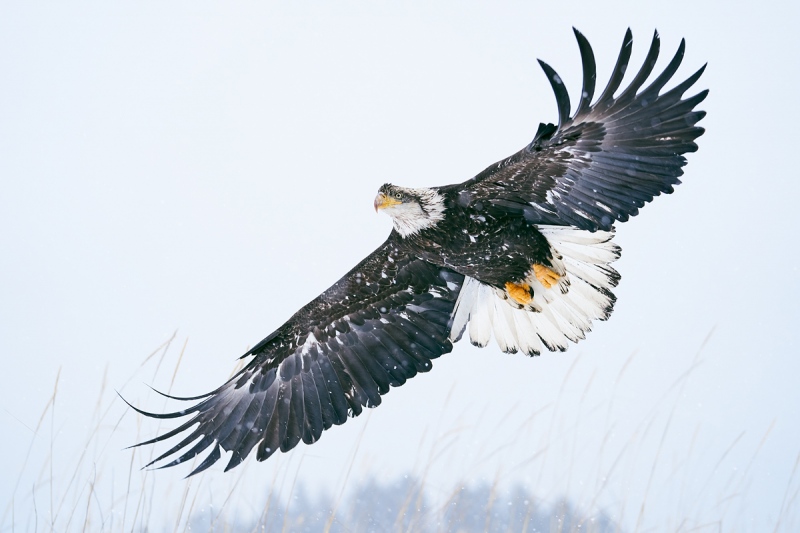













In image #3 above, the osprey forms a spectacular hood ornament for the flying catfish.